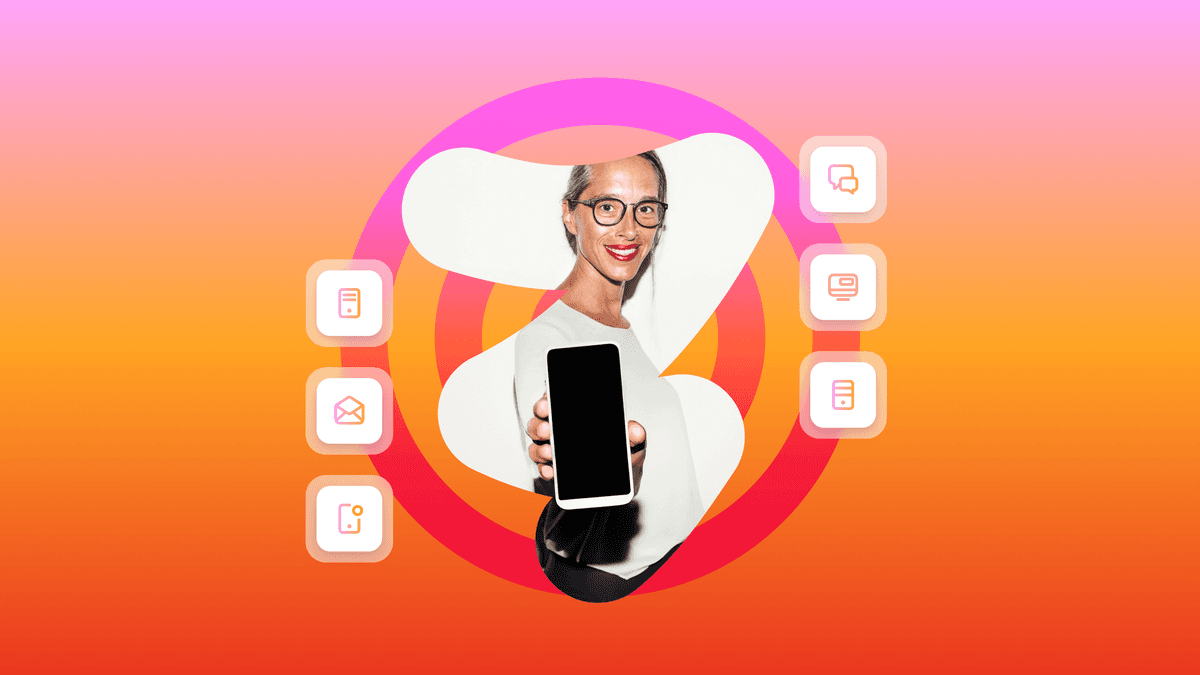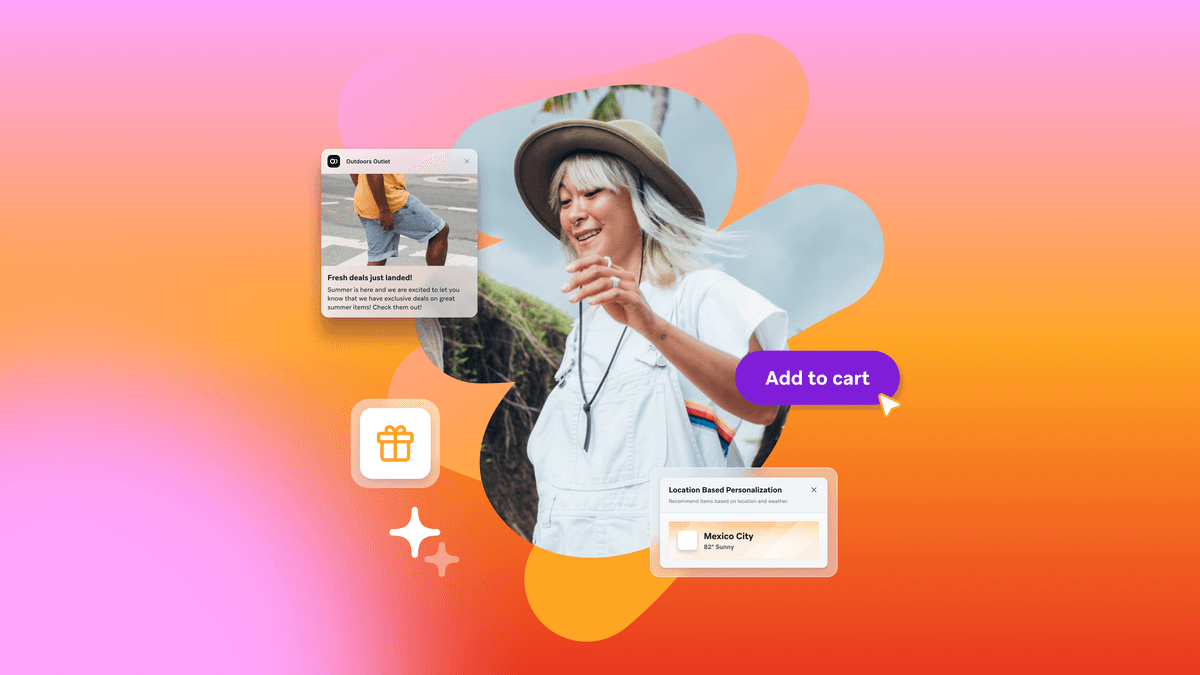Mobile-Powered Loyalty Programs: How to Get It Right
Published on January 31, 2018/Last edited on January 31, 2018/7 min read


Team Braze
The world’s moving fast. New technologies, new consumer expectations. And all manner of new distractions that can keep customers from coming back. To ensure long-term success, you have to take advantage of the possibilities that technology offers to build strong, sustainable customer relationships; but that can be easier said than done.
One great way to connect your users more deeply with what you’re selling? Loyalty programs. Ideally, brands create and maintain loyalty not just by rewarding it, but by earning it—by genuinely making their customers’ lives easier, better, more convenient, and more enjoyable. But it doesn’t hurt to supplement an already wonderful experience with rewards that encourage more loyalty, and invite users to become part of your brand story.
Small Business Trendscalled mobile loyalty programs, “the most effective tactic when it comes to increasing customer lifetime value.” That’s quite an endorsement! Loyalty programs are driven by the same general principle asrelationship marketing, where brands retain customers by building trust and reciprocity. A loyalty program could be appropriate for your brand if building a base of returning customers is important to you—and it’s about more than the traditional buy 5, get 1 free model.
The 3 keys to a smart, mobile-first loyalty program
A simple recipe for creating a great loyalty program is…
- One part rewards
- One part tracking
- And two parts joie de vivre!
Rewards: Get creative
Make rewards valuable, timely, and relevant. The tried and true “buy X get X for free” can work, but there’s more to the rewards game.
Sephora offers a level-up type gamification rewards system that gives customers fun perks like free shipping and makeovers when they hit certain spending benchmarks. Lyft offers drivers and passengers rewards for encouraging both drivers and riders to refer friends. Various banks encourage users to switch loyalty from the competitors by offering rewards when they open a brand new account.
Looking to keep your customers’ loyalty accounts in order in real time? With webhooks, it’s possible to seamlessly update loyalty point balances within your internal or third-party systems in response to in-app and on-web behavior. That allows you to set up alerts and send appropriate offers in response to certain behavioral triggers. In a world where everything happens in an instant and customers won’t tolerate out-of-date information, webhooks can be a key tool for supporting strong customer relationships.
Tracking progress: Keep an eye on user lifecycle as you develop your program
The process begins with understanding where users are in their customer journey. As we know, it’s not always simple to map a template through the user funnel as it may unfold, because almost no two people interact with an brand in exactly the same way.
Using a lifecycle engagement platform, it’s possible to gather nuanced, actionable data about how each member of your audience is engaging with your website, apps, and other aspects of your brand experience, then use those insights to optimize your mobile loyalty program and the messaging that supports it. The better you understand how loyalty program members are interacting and what campaigns are effective at driving new sign-ups, the better your long-term customer relationships will be.
Joie de vivre!
A loyalty program can—and should—have personality. If you know your community, and know what their pain points and desires are, this kind of program can be a great opportunity for some cross-channel marketing, gamification, or for expanding your brand voice.
Remember your brand story as you develop your loyalty program. A piece from shopify.com does an excellent job of looking at the pitfalls and rewards of loyalty programs, and highlights how loyalty can play into a brand story, “Besides the impact rewards programs can have on a company’s bottom line, they also play a pivotal role in shaping the consumer’s perspective of the brand.” Plus, “loyalty programs, according to this survey of more than 11,000 consumers, actually have more influence on brand satisfaction than price or perception of value.”
SmartInsights.com agrees, and suggests that, “While traditionally the main benefit of loyalty programs is saving money, you can also make the shopping experience more engaging with gamification techniques—like inviting customers to contests and incentivizing them to share your pages.”
3 brands doing a great job with loyalty programs right now
Starbucks
We can’t all be Starbucks, but we might be able to learn from the big guns.
The Starbucks app works like a traditional rewards program, the kind that used to work with a paper punch-card; you order so many drinks, get your card punched enough times, and you get free stuff. But the same app also lets users place and pay for orders without having to stand in line—plus the app gives you access to music. The idea is to simplify the whole order/pay/sip process, make it easier and better, and also to keep the brand front of mind.
Starbucks also listened to their customers: shoppers were gaming the prior system by ringing up items one by one to make it look like each item was its own visit. Customers asked to be rewarded for spending instead of frequency of purchases, and Starbucks listened. By collecting data, paying attention, and having true two-way communication with the masses, they earned greater loyalty.
Walgreens
Walgreens’ Balance Rewards program also combines a rewards program with the ability to order and pay through the app. The big difference is that users don’t just get points for making purchases, but also for making healthy choices—like exercising, quitting smoking, or getting the kind of routine tests everybody likes to put off, like blood pressure or glucose. Walgreens isn’t simply offering customers a bribe for shopping more, it’s actually providing tools to help people improve their lives. That’s not just effective; it’s meaningful.
Ritual
Ritual is a service that allows users to pre-order food from participating restaurants through its app. It’s also a rewards program. With every purchase, users earn points towards free food at any of Ritual’s partner restaurants. From Ritual’s standpoint, this is another simple rewards program, like an old-fashioned punch card, but for participating restaurants, it’s something far more interesting. By working with Ritual, each restaurant can offer its customers the chance to order ahead and skip the line—the sort of lifestyle perk that inspires true loyalty. And since points earned at one restaurant can be redeemed at another, the app encourages users to try out new places to eat, earning participating restaurants new customers in an organic, sustainable way.
So, What Does This Mean for You?
How can you make the most of a mobile-powered loyalty program?
Start by thinking about the fact that while customers accrue points for purchases, they’re also telling you what they buy, how, and when—and where, if you’re smart about tracking location data. What can you do with this knowledge that makes your customers’ lives easier?
Gimmicks can get attention and games can retain interest, but the gold standard is always to make life easier and more enjoyable.
Before you dive in, make sure a mobile rewards or loyalty program is right for you.
There are some downsides. A McKinsey study evaluated 55 publicly traded companies offering rewards programs. They discovered that loyalty grew at about the same rate or slightly slower than companies who didn’t invest in loyalty programs. Bear in mind, these were the big guys, and these data might look different for companies at earlier or smaller stages.
A loyalty program is a great place to try something new.
As long as you approach your loyalty program with an attitude of creativity and helpfulness, you’re not likely to go wrong. Develop your ideas, try them out, and see what happens.

Be Absolutely Engaging.™
Sign up for regular updates from Braze.
Related Content
View the Blog
The future of payments: Enhancing innovation and trust in a changing landscape

Erin Bankaitis

Multichannel optimization: Unlocking a more cohesive strategy for engaging customers

Team Braze

Customer engagement must-haves for peak shopping season
